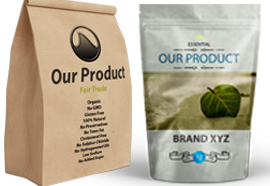Food Manufacturers Struggle with Right to Know GMOs law in Vermont
by Bonnie Janzen and Elizabeth Horn, Ph.D.
-

Many of our clients have been working diligently on how to best address the new law in the state of Vermont regarding the Right to Know GMO.
The Vermont Genetically Engineered Food Labeling Act requires that by July 2016 all food and beverages sold in the state (including bread, cereal, snack chips, soy milk, and more) that contain GMOs carry a label that reads “produced with” or “partially produced with genetic engineering.” GMOs (genetically modified organisms) are plants or animals that have had their DNA altered in a lab. Unlike cross-breeding, which involves the transfer of DNA between closely related plants or animals, genetic engineering techniques move genetic material from any organism to any other organism. Food and beverages that often contain GMOs include canola, corn, soy, and sugar beets.
Food and beverage manufacturers have several options to consider:
- Order and produce new packaging for each state with this type of labeling law (starting with Vermont).
- Reformulate products to remove any GMO ingredients, so that no labeling is required. Which might also affect the price of the products that are reformulated.
- Discontinue sales in any state with the mandatory labeling laws (again starting with Vermont).
Why should consumers all over the United States care about the packaging in Vermont? Over time, other states may adopt the Vermont laws (or similar legislation). Food and beverage companies are scrambling to respond to the changing legal landscape. Because of manufacturing/distribution limitations, any changes made to product labels to accommodate Vermont’s new law would likely be made for all products sold in the United States. Companies actively are seeking guidance to answer key questions:
- What immediate impact will the new labels have on consumers? Will they notice the new labeling? Will it impact their purchase and usage? Will consumers be willing to pay more for organic or non-GMO products?
- Beyond the immediate sales forecasts and impacts, will brand equity be negatively impacted? If a product or brand has a “health halo,” will that image be negatively impacted now that consumers realize the products are produced with GMOs or partially produced with GMOs? To what degree will consumers trade off or leave this brand?
Well-crafted market research can assist companies working through these issues. The main research options include monadic concept testing, shelf-set assessments, and choice modeling.
In monadic concept testing, each respondent evaluates one concept—either the product with current labeling or the product with the new GMO labeling. The resulting concept ratings are compared to determine which changes in purchase behavior, if any, occur when adding the new GMO labeling. The advantages to this technique are that the method is quick and easy to administer, and the analysis is straightforward. The lack of competitive presence is the main disadvantage to the monadic concept testing method (competitors must change their labeling as well). This method also does not consider the impact of the new labeling on other types of products within the line. What do consumers think about your other products now that they realize that your products contain GMOs?
Shelf-set testing, on the other hand, addresses several key issues simultaneously. During the online survey, consumers see an image of the current category shelf and are asked to select the number of products they have purchased recently. Then they view a shelf that presents the GMO-containing products with the new labeling (organic and non-GMO products are also shown on the shelf with their current labels). Consumers select the products they would most likely buy from this shelf. Then the survey draws attention to the new GMO labeling; again, consumers select the products they would most likely buy. The selections made on these shelf sets are modeled, and market simulations are conducted to estimate the impact of the new labeling on sales for all products within the category. Aside from shelf-set exercises, brand equity and buying behavior for other, noncategory products are assessed before and after consumers are introduced overtly to the new package labeling.
The choice modeling method provides additional insights. This method yields all of the benefits of shelf-set testing plus guidance for pricing and product line optimization. In the survey choice exercise, consumers evaluate several proposed market (new GMO labeling) shelf sets. Products are shown at different price points across screens and can be present or absent from the market. Just like with shelf-set testing, a model is estimated and market simulations are conducted to yield the impact of the new labeling on sales and pricing for all products within the category. Additionally, the model can be used to identify the optimal set of products to retain in the line and, calibrated with current market sales data, to produce a forecast of volume and revenue.
When Vermont’s new law is in effect, each company will have a “real world” test of what will happen to sales and switching behavior. Companies have tough choices to make before the law’s enactment in July 2016. Any actions taken (price change, product line change) can be risky without understanding the potential outcomes. Solid market research reduces the likelihood of a costly business decision and can help address the larger, looming question…will the remainder of the country follow Vermont’s example?
About the Authors
Bonnie Janzen (bjanzen@decisionanalyst.com) is Executive Vice President at Decision Analyst and Elizabeth Horn (ehorn@decisionanalyst.com) is Vice President, Director of Marketing Science at Decision Analyst . They may be reached at 1-800-262-5974 or 1-817-640-6166.
Copyright © 2016 by Decision Analyst, Inc.
This posting may not be copied, published, or used in any way without written permission of Decision Analyst.

